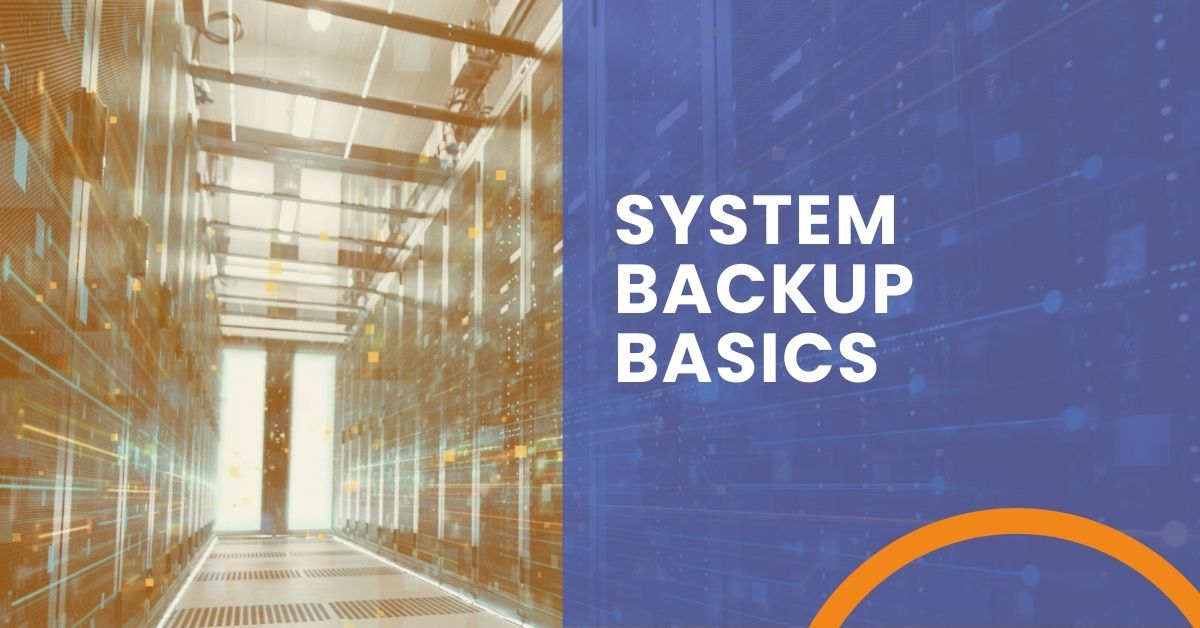
System Backup Basics and Your Disaster Recovery Plan
What you need to know about System Backup Basics and how they play a part in your overall Disaster Recovery Plan
Hello. My name is Brian Largent. I’m with the ArcLight group in Tulsa, Oklahoma. And this is another episode of Three Minute Thursday. Today we’re going to be talking about system backups. System backups are actually part of a much larger plan called a disaster recovery plan. The backups are the basic building block of that plan. Without the backups there is really no recovery. So we’re just going to cover that aspect today. So let’s dive right in.
Without backups you cannot keep your organization moving forward. Eventually you’re going to have a disaster or an emergency. Something is going to happen that prevents your organization from being productive. And how long it takes your organization to be productive is going to be directly related to the types of backups you put in place.
Recovery Point Objective (RPO)
So there’s a couple of terms you need to know. The first term is RPO, which stands for Recovery Point Objective. That is how much data your organization can afford to lose between backups. For instance, if you only backup your server once per day, you have a 24 hour RPO, meaning that you can lose up to 24 hours worth of data. That would have to be either re-entered into the system, or you’d have to accept that that data is not really a big deal to your organization. We don’t see that very often.
Recovery Time Objective (RTO)
The next term is RTO, which stands for Recovery Time Objective. That’s how long your organization can afford to be down. So you might state that we can afford to be down for 24 hours. That means that you need to build your disaster recovery plan, and your backup plan, around a 24 hour downtime. It’s obvious, right? But can you get a new server in house in that amount of time? Can you spin up your backups in time? And there’s a lot of variables that go into that. So your RTO is also very critical to your organization, but it’s often overlooked.
Backup Methods
Now let’s talk about the methods of backup. There’s incremental, differential, full, synthetic full and copy. Really of all these, they’re all pretty practical ways to back up your data, depending on what you’re trying to accomplish. The only one of these we don’t recommend is a copy. And the reason we don’t recommend a copy backup is because if you have a problem with a virus, like a encryption virus, it can encrypt the copy as well as the backup, if they reside in the same environment. So definitely a very dangerous type of backup.
There’s two types of backups, that’s data only and full system. We don’t recommend data only because it only gets the files. Whereas a full system backup gets the files, the applications, everything that’s on that server as it sat the last backup that was performed.
Where do you store your backups?
You need to have a repository on-site as well as one off-site. The on-site repository greatly reduces the time to recover files in an emergency. But if you have a fire, flood, tornado, hurricane, whatever, that destroys your environment you need to have off-site backups that are in a secure environment, farther from your office that you can then recover from.
How do you protect your backups?
Well, number one, you need to encrypt them both locally and at the remote repository. Number two, you need to restrict access. Number three, you need to have access logging, knowing who has access to them and when. Next you have testing. That’s testing the restoration of your data into various different environments, such as a virtual server or a physical host, or if you have a complex system, possibly a sandbox. Then you have alerting. That’s alerting on failure, success, low disk space, or even an off-site failure. If your local backups are successful, but your off-site is failing. It’s not doing you much good.
Documenting your backup
And lastly, you need to document the entire thing. Document your backup schedule. Who’s responsible for the backups? What is your recovery schedule for testing? Failure recovery process, review the entire process regularly. That’s how you’re going to protect your environment.
Well, that’s all I’ve got for today. So hopefully this gives you a little bit of insight into how to backup your environment and keep yourself safe. If you have any questions or concerns, contact us.
Share the Knowledge
Managed Service Provider CHECKLIST
Land on the best IT solutions partner for your needs with this easy-to-follow, one-page download.










